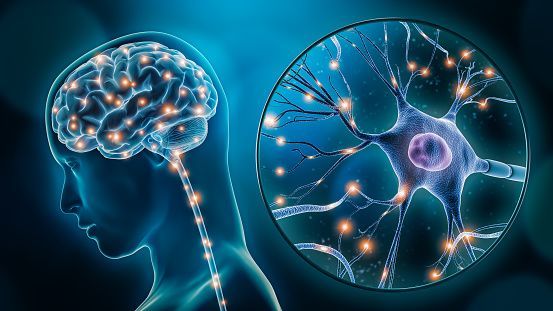Neuralink
Neuralink Corporation is a neurotechnology company that develops implantable brain-machine interfaces (BMIs) and is co-founded by Elon Musk and others. The company is headquartered with OpenAI in the Pioneer Building in San Francisco. Neurlink was launched in 2016 and was first reported publicly in March 2017.
Since its inception, the company has hired many high-profile neuroscientists from various universities. As of July 2019, it had received 158 million in funding (of which 100 100 million came from Musk) and was employing a staff of 90 employees. At the time, Neurlink announced that it was working on a “sewing machine-like” device capable of threading very thin (4 to 6 μm wide) threads into the brain, and demonstrated a system that lab Reads the information of the rat through 1,500. Electrodes They expected to begin experiments with humans in 2020, but have since moved the projection to 2022.
Several neuroscientists and publications, including the MIT Technology Review, have criticized Musk’s claims regarding the technology.
Cultural Criticism
An article in Fortune in January 2022 highlighted criticism of Neuralink’s corporate culture by anonymous former employees. He described it as a “culture of blame and fear” and with an anxious preference. , Musk Injured management by encouraging junior employees to “email directly to issues and complaints.”
Technology
In 2018, Gizmodo reported that Neurlink had been “extremely secretive about its work”, although public records show that it had tried to open an animal testing facility in San Francisco. He then began researching at the University of California, Davis. In 2019, during a live presentation at the California Academy of Sciences, the Neuralink team unveiled to the public the prototype technology they were working on. It is a system that includes ultra-thin probes that will be inserted into the brain, a neurosurgical robot that will operate, and a high-density electronic system capable of processing information from neurons. It is based on technology developed at UC and UCSF Berkeley.
Probes
The probe, which consists mostly of polyamide, a biocompatible material, containing a thin gold or platinum conductor, is injected into the brain by an automated procedure performed by a surgical robot. Each probe consists of a section of wire that contains electrodes capable of detecting electrical signals in the brain, and a sensory area where the wire interacts with an electronic system to amplify and receive brain signals. Allows. Each probe consists of 48 or 96 wires, each with 32 independent electrodes, forming a system of up to 3072 electrodes per formation.
Robot
Neurallink says it has developed a robot capable of quickly inserting many flexible probes into the brain, which can prevent tissue damage and longevity problems associated with larger and more rigorous probes. Is. This robot has an entry head with a 40 μm diameter needle made of tungsten rhenium designed to attach to entry loops, designed to pass and insert individual probes, and Meninges and tissue penetrate the brain. This robot is capable of inserting up to six wires (192 electrodes) per minute.
Electronics
Neuralink has developed an Application-specific Integrated Circuit (ASIC) to create 1,536 channel recording systems. The system consists of 256 amplifiers capable of individual programming (“analog pixels”), analog-to-digital converters (“ADCs”) inside the chip, and peripheral circuit controls for serializing the digitized information obtained. The goal is to convert information obtained from neurons into comprehensible binary code in order to gain a greater understanding of brain functions and to enable them to reactivate these neurons. With current technology, the electrodes are still large enough to record the firing of individual neurons, so they can only record the firing of a group of neurons. Neuralink representatives believe that this problem can be reduced with algorithms, but it is computationally expensive and does not give accurate results.
In July 2020, according to Musk, Neuralink acquired the status of an FDA breakthrough device that allows limited human testing for medical devices under FDA guidelines.
Animal Testing
Neurallink surgically implants its instruments into the brains of live monkeys, pigs, and other animals. Neurallink’s methods have been criticized by groups such as PETA.
Experiments on Neuralink monkeys from 2017 to 2020 were conducted in partnership with UC Davis. UC Davis transferred 7 monkeys to Neuralink At the end of their partnership, In 2022, the Physicians Committee for Responsive Medicine (PCRM) accused Neuralink and UC Davis of abusing several monkeys, causing them to suffer from chronic infections due to psychological distress, extreme pain, and surgery. At least 23 monkeys have been included in experiments conducted by Neuralink and UC Davis, and the PCRM estimates that 15 of these monkeys died or died as a result of the experiments. In addition, the PCRM alleges that UC Davis withheld photographic and video evidence of abuse.
Reception
Several neuroscientists have commented on the intent of Musk and Neurallink members to create brain and computer interfaces. In a live demonstration in August 2020, Musk described one of his first devices as a “fit butt in your skull” that could soon cure paralysis, deafness, blindness, and other disabilities. Many neuroscientists and publications have criticized these claims. The MIT Technology Review described them as “highly speculative” and “neuroscience theater.”
Marie Lou Jepson, the founder of Openwater, a company that also works in the field of brain-computer interfaces, has expressed concern about the rejection response, which could lead to an investigation. Andrew Jackson, a professor of neural interfaces at Newcastle University commented that he thought there was nothing revolutionary about Neurallink’s pig implant presentation but that the wireless features were excellent. Thiago Arezzo of Wisconsin Medical College argued that Neurallink “showed a bit more than a shiny new design for BMI with more electrodes”.
Read More Omicron Information What You Need to Know and How to Avoid


